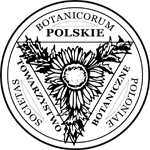Effect of different rates of urea fertilization on yield and some biochemical and physiological properties of four wheat cultivars under two irrigation regimes
Abstract
Keywords
Full Text:
PDFReferences
Bączek-Kwinta R, Kozieł A, Seidler-Łożykowska K. Are the fluorescence parameters of German chamomile leaves the first indicators of the anthodia yield in drought conditions? Photosynthetica. 2011;49:87–97. https://doi.org/10.1007/s11099-011-0013-3
Pirzad A, Shakiba MR, Zehtab-Salmasi S, Mohammadi SA, Darvishzadeh R, Samadi A. Effect of water stress on leaf relative water content, chlorophyll, proline and soluble carbohydrates in Matricaria chamomilla L. J Med Plant Res. 2011;5:2483–2488.
Sadras VO, Lemaire G. Quantifying crop nitrogen status for comparisons of agronomic practices and genotypes. Field Crops Res. 2014;164:54–64. https://doi.org/10.1016/j.fcr.2014.05.006
Cossani CM, Slafer GA, Savin R. Nitrogen and water use efficiencies of wheat and barley under a Mediterranean environment in Catalonia. Field Crops Res. 2012;128:109–118. https://doi.org/10.1016/j.fcr.2012.01.001
Waraich EA, Ahmad R, Saifullah Ahmad A. Water stress and nitrogen management effects on gas exchange, water relations, and water use efficiency in wheat. J Plant Nutr. 2011;34:1867–1882. https://doi.org/10.1080/01904167.2011.600413
Ahmed A, Uptmoor R, El-Morshidy M, Kheiralla K, Ali M, Mohamed NE. Some physiological parameters as screening tools for drought tolerance in bread wheat lines (Triticum aestivum L.). World. 2014;2:109–114. https://doi.org/10.12691/wjar-2-3-4
Shangguan Z, Shao M, Dyckmans J. Nitrogen nutrition and water stress effects on leaf photosynthetic gas exchange and water use efficiency in winter wheat. Environ Exp Bot. 2000;44:141–149. https://doi.org/10.1016/S0098-8472(00)00064-2
DaMatta FM, Loos RA, Silva EA, Loureiro ME, Ducatti C. Effects of soil water deficit and nitrogen nutrition on water relations and photosynthesis of pot-grown Coffea canephora Pierre. Trees. 2002;16:555–558. https://doi.org/10.1007/s00468-002-0205-3
Makoto K, Koike T. Effects of nitrogen supply on photosynthetic and anatomical changes in current-year needles of Pinus koraiensis seedlings grown under two irradiances. Photosynthetica. 2007;45:99–104. https://doi.org/10.1007/s11099-007-0015-3
Morgan JA. Interaction of water supply and N in wheat. Plant Physiol. 1984;76:112–117. https://doi.org/10.1104/pp.76.1.112
Alexieva V, Sergiev I, Mapelli S, Karanov E. The effect of drought and ultraviolet radiation on growth and stress markers in pea and wheat. Plant Cell Environ. 2001;24:1337–1344. https://doi.org/10.1046/j.1365-3040.2001.00778.x
Stewart C. Proline accumulation: biochemical aspects. In: Paleg LG, Aspinall D, editors. Physiology and biochemistry of drought resistance in plants. New York, NY: Academic Press; 1981. p. 243–251.
Routley D. Proline accumulation in wilted ladino clover leaves 1. Crop Sci. 1966;6:358–361. https://doi.org/10.2135/cropsci1966.0011183X000600040019x
Maggio A, Miyazaki S, Veronese P, Fujita T, Ibeas JI, Damsz B, et al. Does proline accumulation play an active role in stress‐induced growth reduction? Plant J. 2002;31:699–712. https://doi.org/10.1046/j.1365-313X.2002.01389.x
Lichtenthaler H, Wellburn AR. Determination of total carotenoids and chlorophyll a and chlorophyll b leaf extracts in different solvents. Biochem Soc Trans. 1983;603:591–592. https://doi.org/10.1042/bst0110591
Bates LS, Waldren RP, Teare I. Rapid determination of free proline for water-stress studies. Plant Soil. 1973;39:205–207. https://doi.org/10.1007/BF00018060
Valentovič P, Luxová M, Kolarovič L, Gašparíková O. Effect of osmotic stress on compatible solutes content, membrane stability and water relations in two maize cultivars. Plant Soil Environ. 2006;52:186–191. https://doi.org/10.17221/3364-PSE
Abraham EM, Huang B, Bonos SA, Meyer WA. Evaluation of drought resistance for Texas bluegrass, Kentucky bluegrass, and their hybrids. Crop Sci. 2004;44:1746–1753. https://doi.org/10.2135/cropsci2004.1746
Bakhtari B, Razi H, Kazemeini SA. Screening drought tolerant rapeseed cultivars using yield and physiological indices. Annu Res Rev Biol. 2017;13:1–10. https://doi.org/10.9734/ARRB/2017/32938
Keles Y, Öncel I. Growth and solute composition in two wheat species experiencing combined influence of stress conditions. Russ J Plant Physiol. 2004;51:203–209. https://doi.org/10.1023/B:RUPP.0000019215.20500.6e
Sinclair T, Ludlow M. Who taught plants thermodynamics? The unfulfilled potential of plant water potential. Funct Plant Biol. 1985;12:213–217. https://doi.org/10.1071/PP9850213
Yamasaki S, Dillenburg LR. Measurements of leaf relative water content in Araucaria angustifolia. Revista Brasilleira de Fisiologia Vegetal. 1999;11:69–75.
Martin M, Miceli F, Morgan J, Scalet M, Zerbi G. Synthesis of osmotically active substances in winter wheat leaves as related to drought resistance of different genotypes. J Agron Crop Sci. 1993;171:176–184. https://doi.org/10.1111/j.1439-037X.1993.tb00129.x
Lazcano-Ferrat I, Lovatt CJ. Relationship between relative water content, nitrogen pools, and growth of Phaseolus vulgaris L. and P. acutifolius A. Gray during water deficit. Crops Sci. 1999;39:467–475. https://doi.org/10.2135/cropsci1999.0011183X0039000200028x
Makino A. Photosynthesis, grain yield, and nitrogen utilization in rice and wheat. Plant Physiol. 2011;155:125–129. https://doi.org/10.1104/pp.110.165076
Gonzalez‐Real M, Baille A. Changes in leaf photosynthetic parameters with leaf position and nitrogen content within a rose plant canopy (Rosa hybrida). Plant Cell Environ. 2000;23:351–363. https://doi.org/10.1046/j.1365-3040.2000.00559.x
Grassi G, Magnani F. Stomatal, mesophyll conductance and biochemical limitations to photosynthesis as affected by drought and leaf ontogeny in ash and oak trees. Plant Cell Environ. 2005;28:834–849. https://doi.org/10.1111/j.1365-3040.2005.01333.x
Sinclair T, Jamieson P. Grain number, wheat yield, and bottling beer: an analysis. Field Crops Res. 2006;98:60–67. https://doi.org/10.1016/j.fcr.2005.12.006
Miller G, Suzuki N, Ciftci‐Yilmaz S, Mittler R. Reactive oxygen species homeostasis and signalling during drought and salinity stresses. Plant Cell Environ. 2010;33:453–467. https://doi.org/10.1111/j.1365-3040.2009.02041.x
Albert B, Le Cahérec F, Niogret MF, Faes P, Avice JC, Leport L, et al. Nitrogen availability impacts oilseed rape (Brassica napus L.) plant water status and proline production efficiency under water-limited conditions. Planta. 2012;236:659–676. https://doi.org/10.1007/s00425-012-1636-8
Demmig-Adams B, Adams Iii W. Photoprotection and other responses of plants to high light stress. Annu Rev Plant Biol. 1992;43:599–626. https://doi.org/10.1146/annurev.pp.43.060192.003123
Xiao X, Xu X, Yang F. Adaptive responses to progressive drought stress in two Populus cathayana populations. Silva Fennica. 2008;42:705–719. https://doi.org/10.14214/sf.224
Blokhina O, Virolainen E, Fagerstedt KV. Antioxidants, oxidative damage and oxygen deprivation stress: a review. Ann Bot. 2003;91:179–194. https://doi.org/10.1093/aob/mcf118
Quan R, Shang M, Zhang H, Zhao Y, Zhang J. Engineering of enhanced glycine betaine synthesis improves drought tolerance in maize. Plant Biotechnol J. 2004;2:477–486. https://doi.org/10.1111/j.1467-7652.2004.00093.x
Eskandari H, Kazemi KK. Response of different bread wheat (Triticum aestivum L.) genotypes to post-anthesis water deficit. Not Sci Biol. 2010;2:49–52. https://doi.org/10.15835/nsb245002
Ercoli L, Lulli L, Mariotti M, Masoni A, Arduini I. Post-anthesis dry matter and nitrogen dynamics in durum wheat as affected by nitrogen supply and soil water availability. Eur J Agron. 2008;28:138–147. https://doi.org/10.1016/j.eja.2007.06.002
DOI: https://doi.org/10.5586/aa.1788
|
|
|






